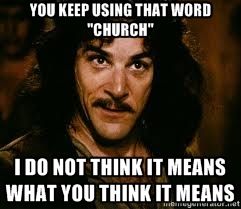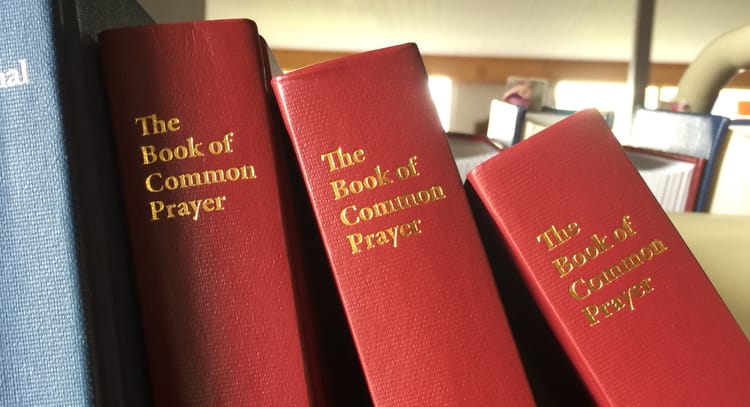The Governance System is not the Church

One of the more brilliant and memorable moments of General Convention 2012 was the approval of the resolution authorizing the body now known as the Task Force to Reimagine the Episcopal Church. I was a guest on the floor of the House of Deputies when the vote was taken. Shockingly, it was unanimous.
There was a collective sense of joyful surprise when the deputies realized that this resolution was being approved with nary a vote against it. I might even say that the presence of the Holy Spirit was tangible in that moment. It was evident that everyone present believed that serious issues needed to be raised and addressed, for the sake of the church and the world. There weren’t fireworks, but there could have been… it was a moment of celebration.

Now, the church has received a Letter from the Task Force, the latest in a series of communications. Judging from the reactions seen thus far, I think it is fair to say that the sense of the semi-miraculous which greeted the approval of this body has departed the stage.
I need to begin these reflections with a very real sense of gratitude to the human beings who have given their time, attention, thought and care to this process. There is no doubt in my mind that there has been much more work behind the scenes in this committee than the public has seen. I can only begin to imagine the amount of brainstorming and teambuilding and norming and writing and editing that has led to the documents we have received.
(Doesn’t that last paragraph look like a build-up to the word “however”? Yes. And that is because the next word to say is “however.” Three times, actually.)
However, I am disappointed that a body whose charge was fairly broad (“to present the 78th General Convention with a plan for reforming the Church’s structures, governance, and administration”) appears to have confined its work almost completely to the sole presenting problem outlined in the Explanation to the resolution: “The administrative and governance structures of The Episcopal Church have grown over the years so that they now comprise approximately 47% of the churchwide budget and sometimes hinder rather than further this Church’s engagement in God’s mission.” To be fair, the proposals that we are beginning to receive certainly reduce the cost of the administrative and governance structures. (Other writers are addressing their ramifications, so I won’t go there.)
However, in focusing on this task, the task force has missed the opportunity to engage the church in a significant conversation about our most critical administrative and structural elements: our dioceses and congregations. The sustainability of many of our congregations for the next twenty to thirty years is uncertain. This puts the church’s capacity to fulfill Christ’s mission at risk. It also means the future of some of our dioceses is unknown. The deputies who voted to authorize a body to examine our structures, governance, and administration were aware of this.
However, the proposals beginning to emerge focus almost entirely on the role of the General Convention and its subordinate committees, and the Presiding Bishop and President of the House of Deputies, and subordinate churchwide staff. (Or perhaps not so subordinate – TREC notes that “churchwide staff report significant confusion as to who sets direction.”)

Congregational and diocesan viability is an area which demands research and analysis, both of which could be within the scope of TREC’s purview – if not to prescribe solutions, then certainly to begin public conversations which are currently taking place in hidden margins.
There is no doubt that attention to the structure of General Convention and the future of the churchwide staff is necessary. However, when every single deputy to General Convention asserts that “the Holy Spirit is urging The Episcopal Church to reimagine itself” there is more at stake than these offices and roles. Is there not room for TREC to engage a wider conversation about how the Holy Spirit may be calling us forward? I hope and believe there is.
The recent letter opens with the image of Lazarus unbound. I would call TREC’s attention to another instance of binding and unbinding, the Gospel of Mark 3:27-29:
But no one can enter a strong man’s house and plunder his property without first tying up the strong man; then indeed the house can be plundered.
“Truly I tell you, people will be forgiven for their sins and whatever blasphemies they utter; but whoever blasphemes against the Holy Spirit can never have forgiveness, but is guilty of an eternal sin”
The people have said that the Holy Spirit is calling for the re-imagination of the church. Focusing this conversation primarily on issues of churchwide staff and governance binds a strong church with a narrow emphasis. We need the whole body of Christ to be freed to confront the real and significant issues we face, and TREC is the body we authorized for this task.
Just as TREC seeks to unbind the church, I pray that TREC will be unbound to open the conversation we need. That conversation includes questions about the Holy Spirit’s call to re-imagine not only our churchwide governance and administration, but also the future of our congregations and dioceses as together we live into the call of Christ.





Member discussion